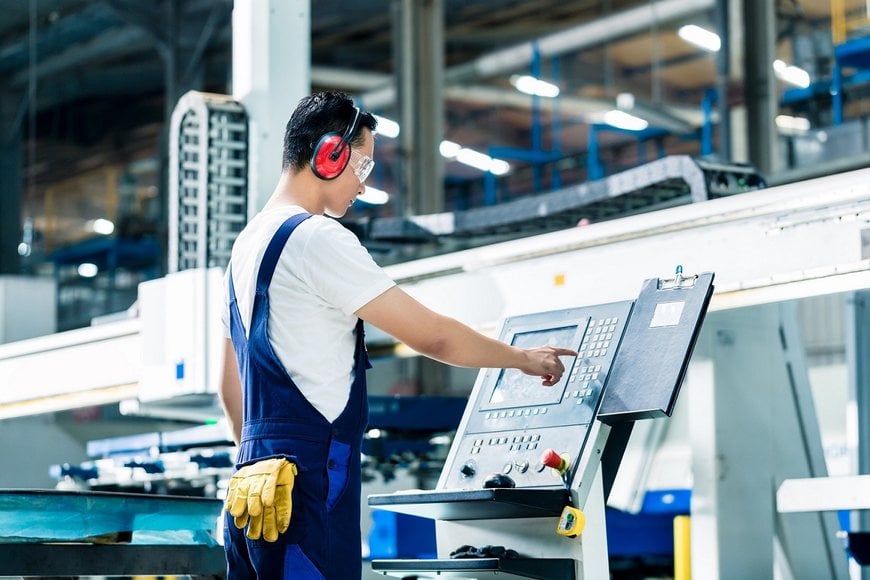www.industry-asia-pacific.com
04
'21
Written on Modified on
Coming ashore? Reshoring manufacturing in the Asia Pacific region
China is the center of global manufacturing but has the coronavirus pandemic led manufacturing firms in the Asia Pacific region to consider decoupling from Chinese supply chains and relocating manufacturing capacity closer to home?

Here, John Young, APAC director at automation parts supplier EU Automation, assesses the likelihood of a structural reconfiguration in the regional economy.
Offshoring describes the process of moving manufacturing capacity overseas to take advantage of cheaper labor costs. It has been a major feature of the global economy since the 1970s and reach its zenith in the 1990s and 2000s, the heyday of globalization. It was through this process of offshoring that China emerged as the center of global manufacturing.
In recent years, there has been much discussion of the idea of reshoring, or relocating manufacturing capacity in the domestic economy. A recent scholarly assessment of this concluded that while offshoring was unlikely to become out of date, the pandemic might ‘accelerate decisions’. By exposing the extent of reliance on China for key supplies, the Wuhan lockdowns altered the risk perception of many decision-makers and encouraged the gradual reconfiguration and diversification of supply chains and productive capacity.
Reshoring or nearshoring?
Cost considerations have always been at the heart of offshoring decisions. However, the comparative advantage enjoyed by China is being eroded by rising labor costs and competition from others Asian countries like Vietnam. Labor costs in Korea are four times higher than in China, but thirteen times higher than in Vietnam.
A recent survey showed that out of every ten Korean firms with operations in China, only seven would consider returning home, despite persistent efforts by the government to incentivize reshoring. Yet while genuine reshoring might be limited in scale, many companies are opting for near-shoring, by expanding their manufacturing capacity in other Asian countries.
Samsung Electronics, for example, expanded its smartphone factories in India and Vietnam, while closing some of its consumer appliance operations in China. Hyundai Motor has increased its production of cars in Vietnam, while suspending a manufacturing line in China. A net effect of decisions like these is a regional economic reconfiguration.
Enter automation
Automation technology will be a key factor in determining the nature and extent of reshoring. In future, rather than asking whether Chinese labor is cheaper than domestic labour, many companies will be asking whether Chinese labor is cheaper than robots. With automation technology becoming more affordable and accessible, many companies are partnering with reliable suppliers like EU Automation in the shift toward advanced manufacturing.
Genuine reshoring is most likely to occur in advanced manufacturing. For example, Canon has recently implemented a fully automated end-to-end camera manufacturing operation in Japan, reshoring capacity that was previously located overseas.
As a region, the Asia Pacific is well positioned to take advantage of the opportunities in this area. South Korea leads the world in robot density, with the latest figures from the International Federation of Robotics showing this country has 855 robots per 10,000 workers. Japan has recently overtaken Germany, the highest placed European country, in these rankings. Japan also dominates the robotics market, accounting for half of global supply.
Sceptics of reshoring often point to skills shortages as a major obstacle that rules out significant changes. Yet while it is true that significant retraining and preparation is required in many places, the opportunities for creating new jobs in high tech industries is there for governments and businesses who are willing to seize them. Here in Singapore, for example, the government is actively preparing to position itself as a hub for a regional economic reconfiguration and has established a new Advanced Manufacturing Training Academy in the Jurong Innovation District to help prepare the workforce for the anticipated changes.
Recent events are helping accelerate a trend toward greater diversification of supply and production in the Asia Pacific region. Countries like Vietnam and Indonesia can take advantage of significant nearshoring, as many companies relocate their production away from China. Meanwhile, although large scale reshoring activities will be limited, there will be many successful instances of this phenomenon in advanced manufacturing, where countries like Japan, South Korea and Singapore are already established as world-leaders in automation technology.
www.euautomation.com

